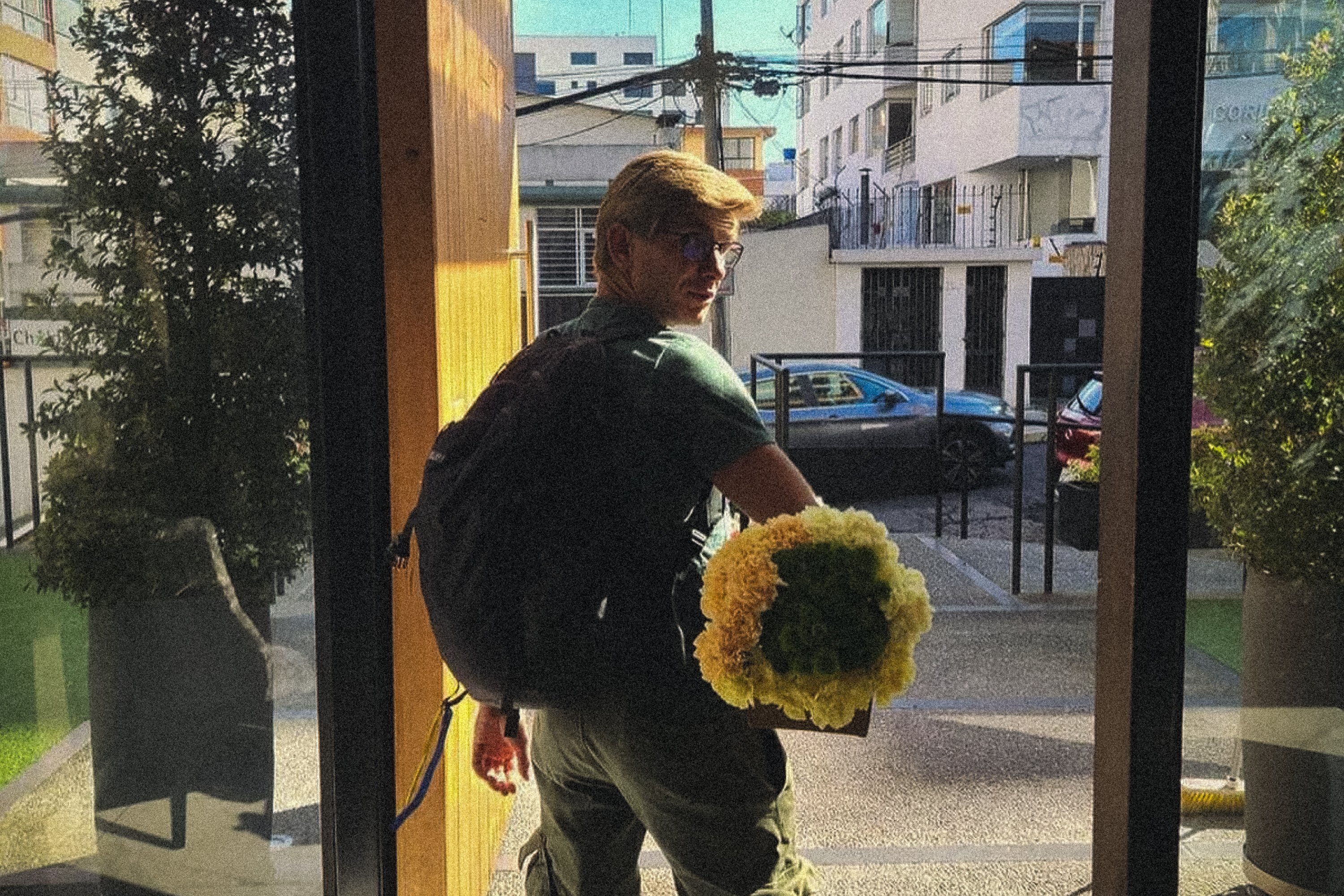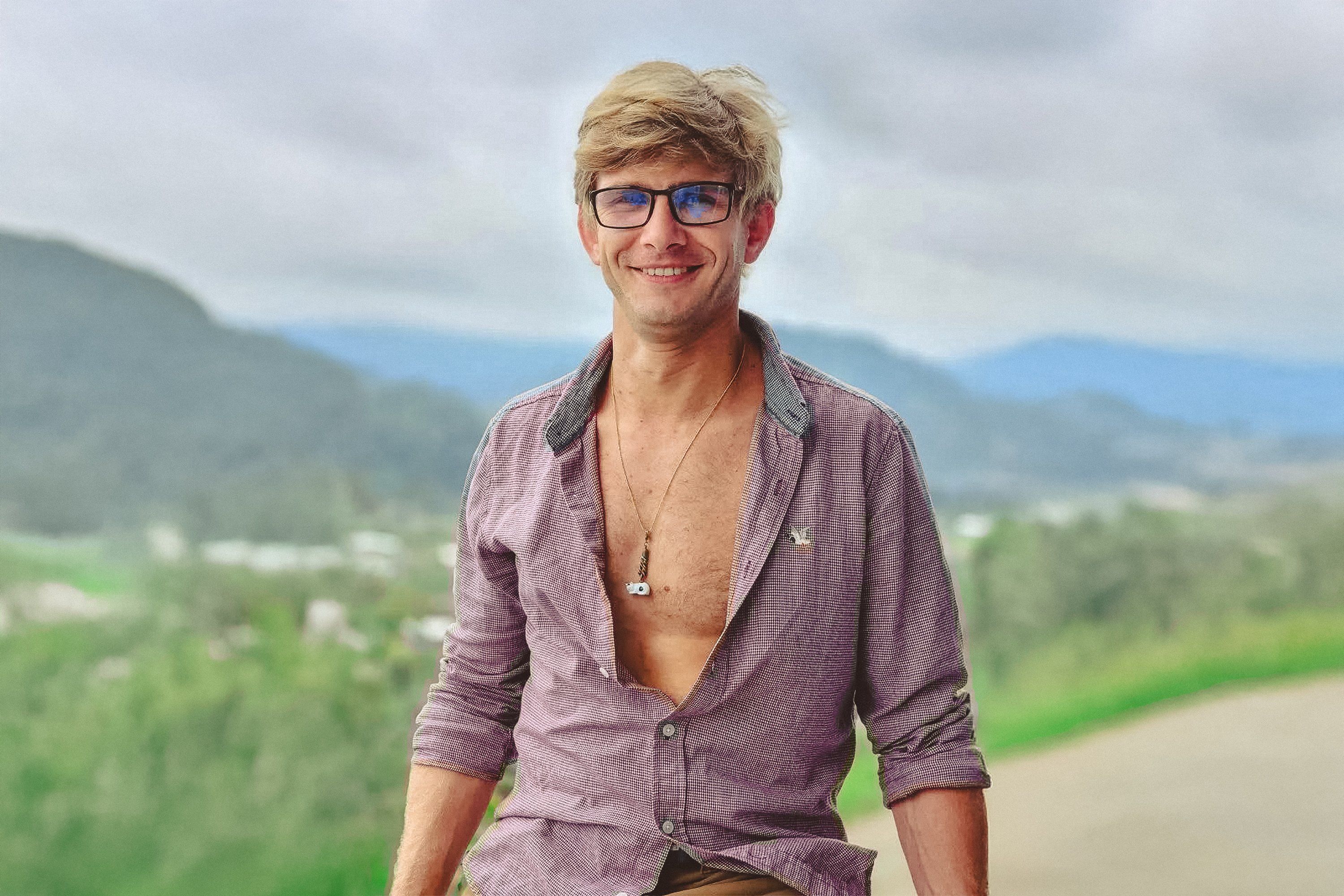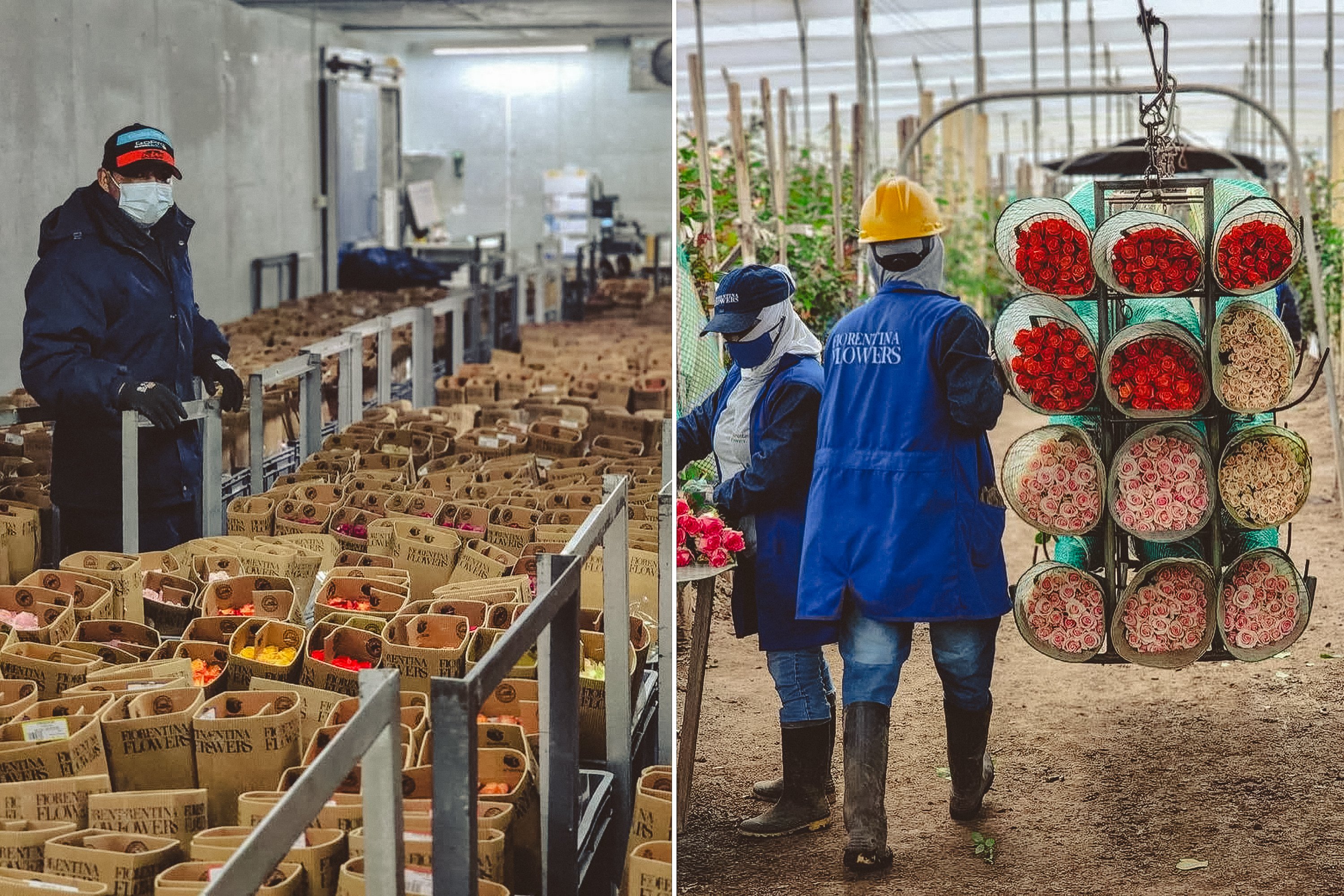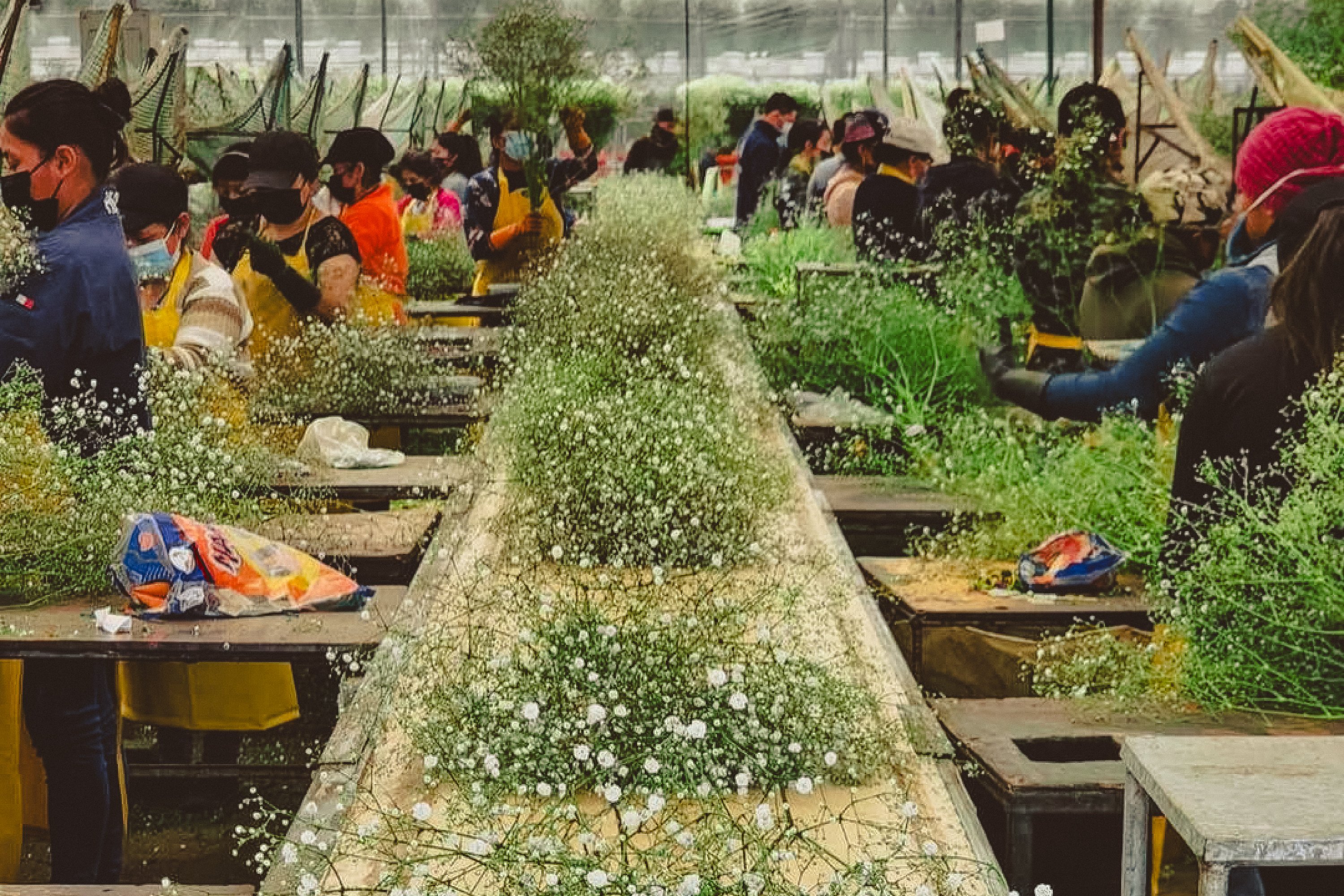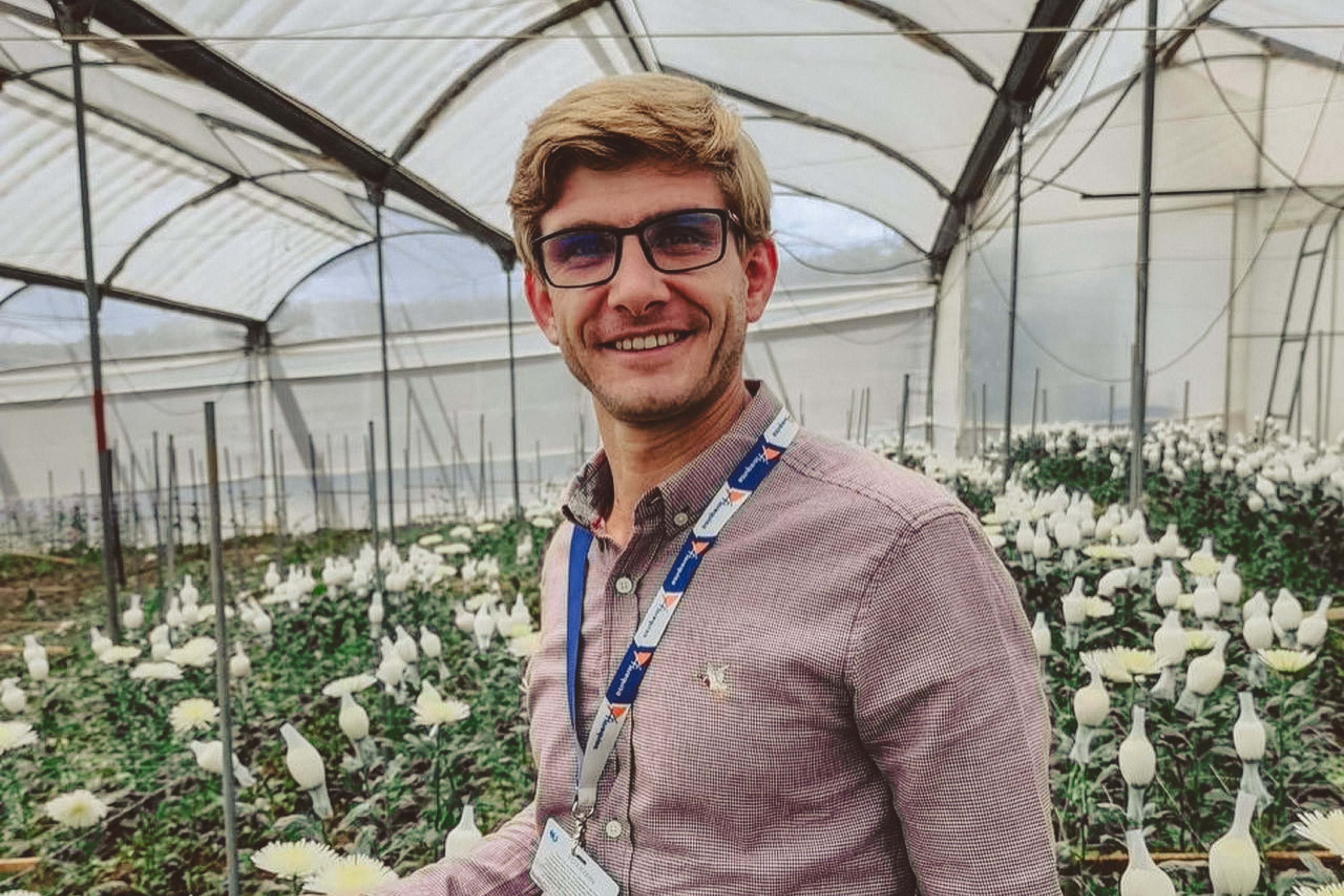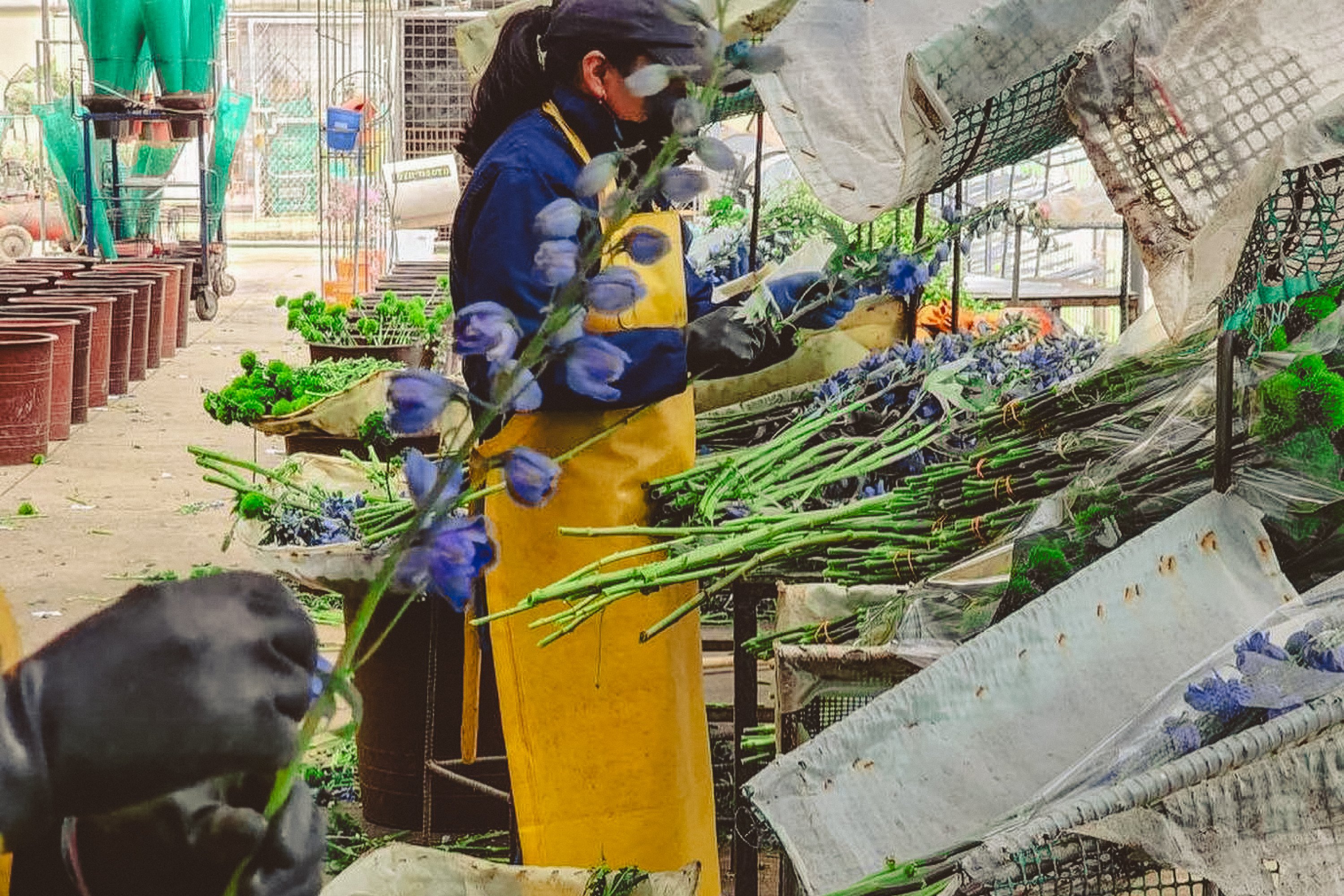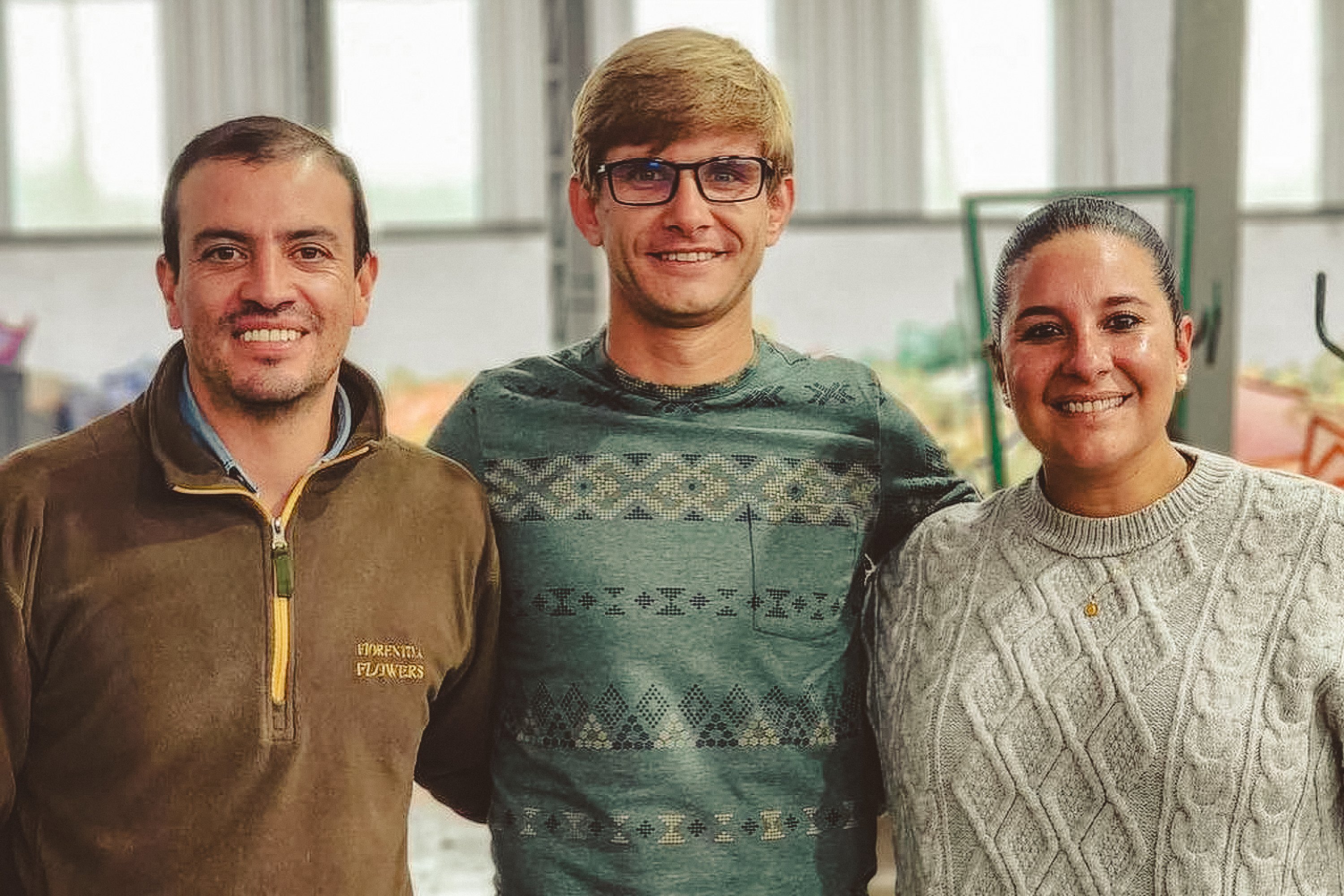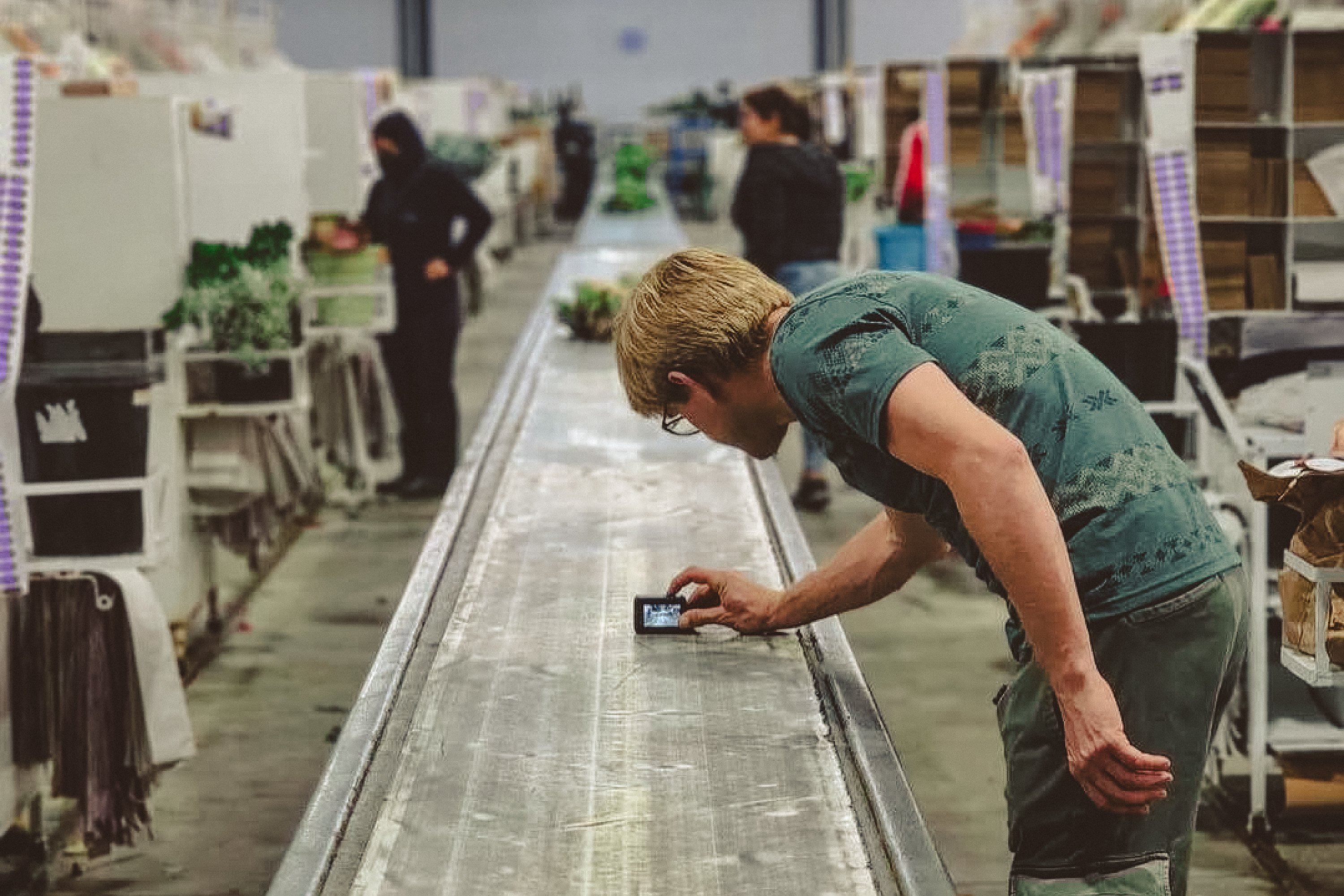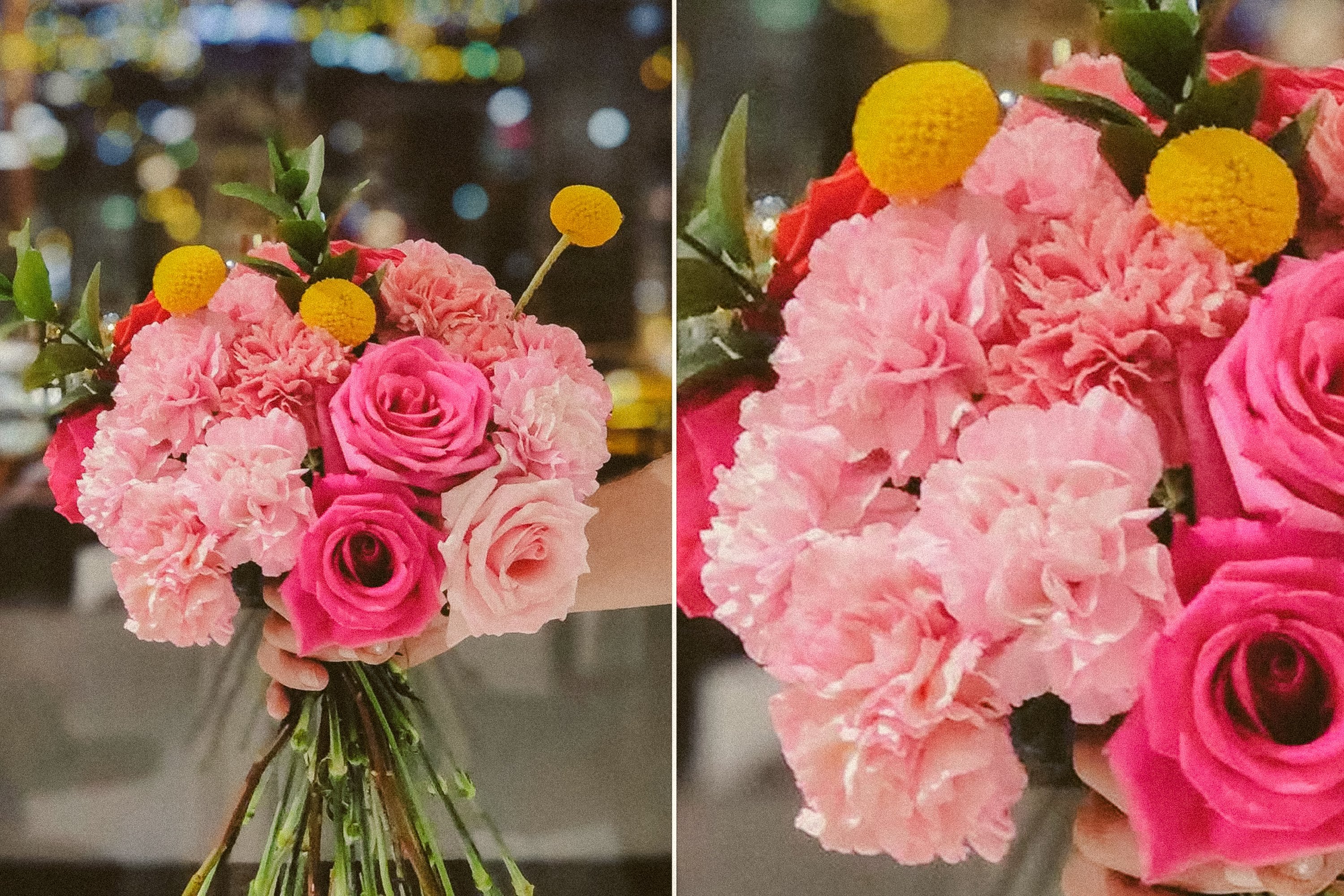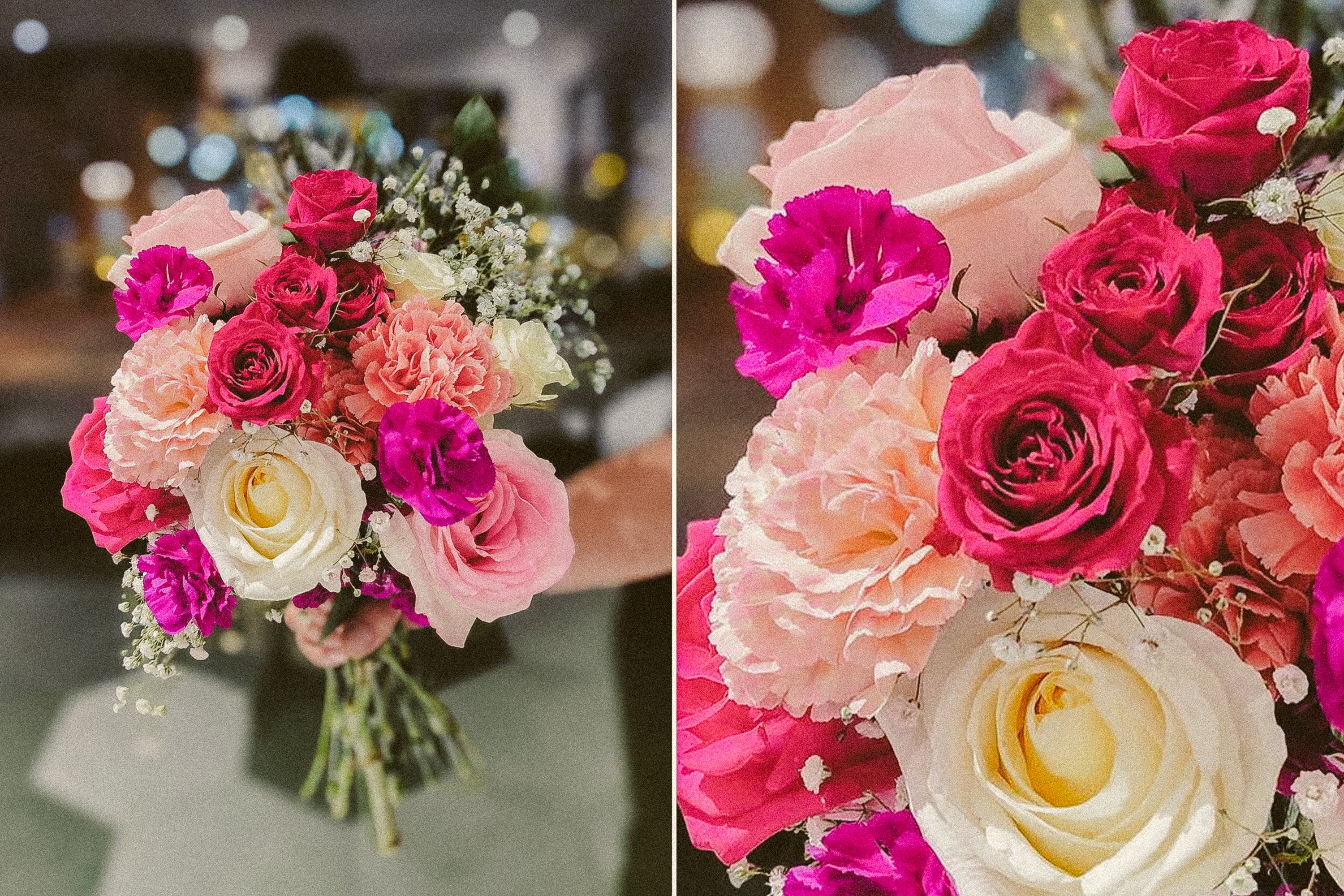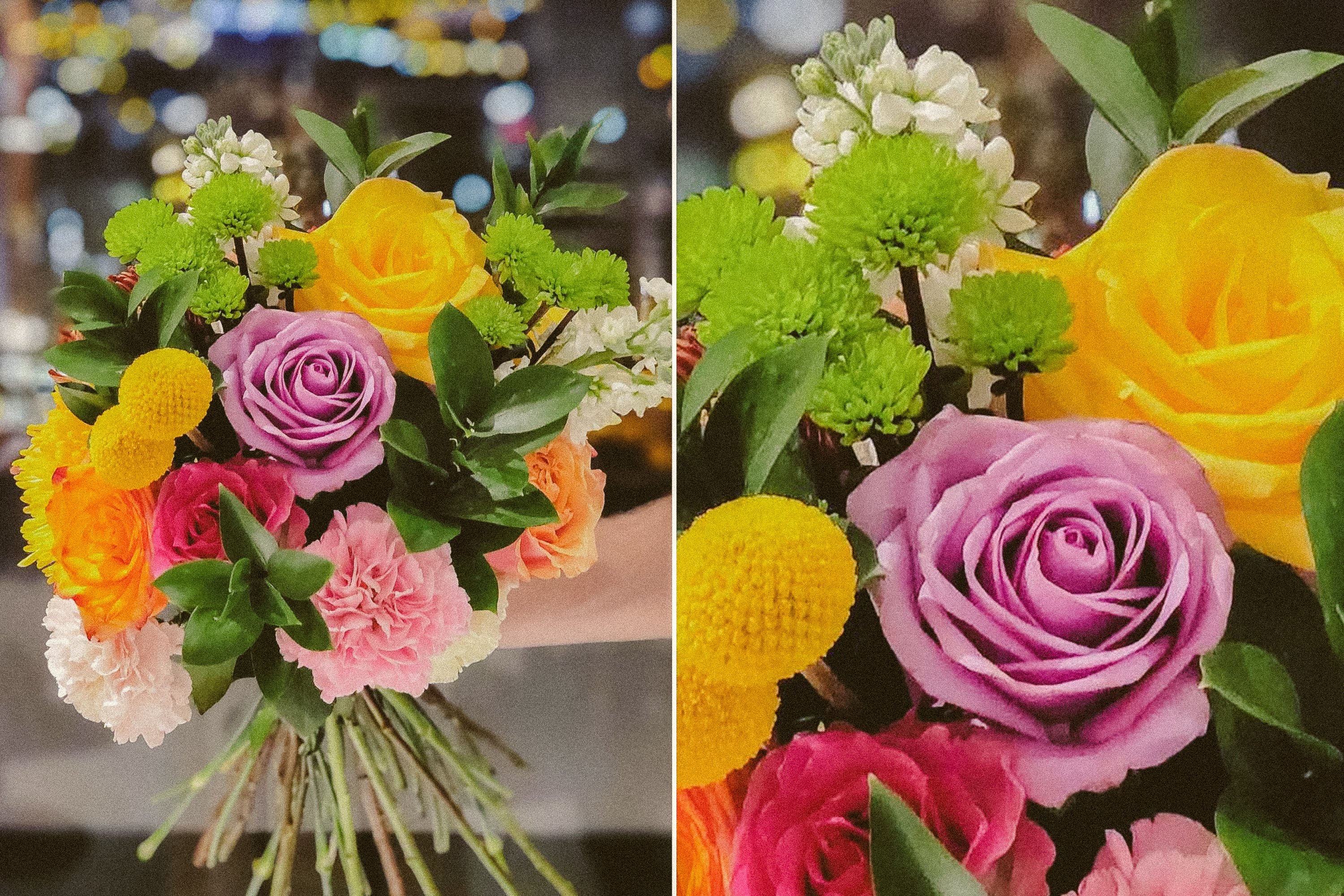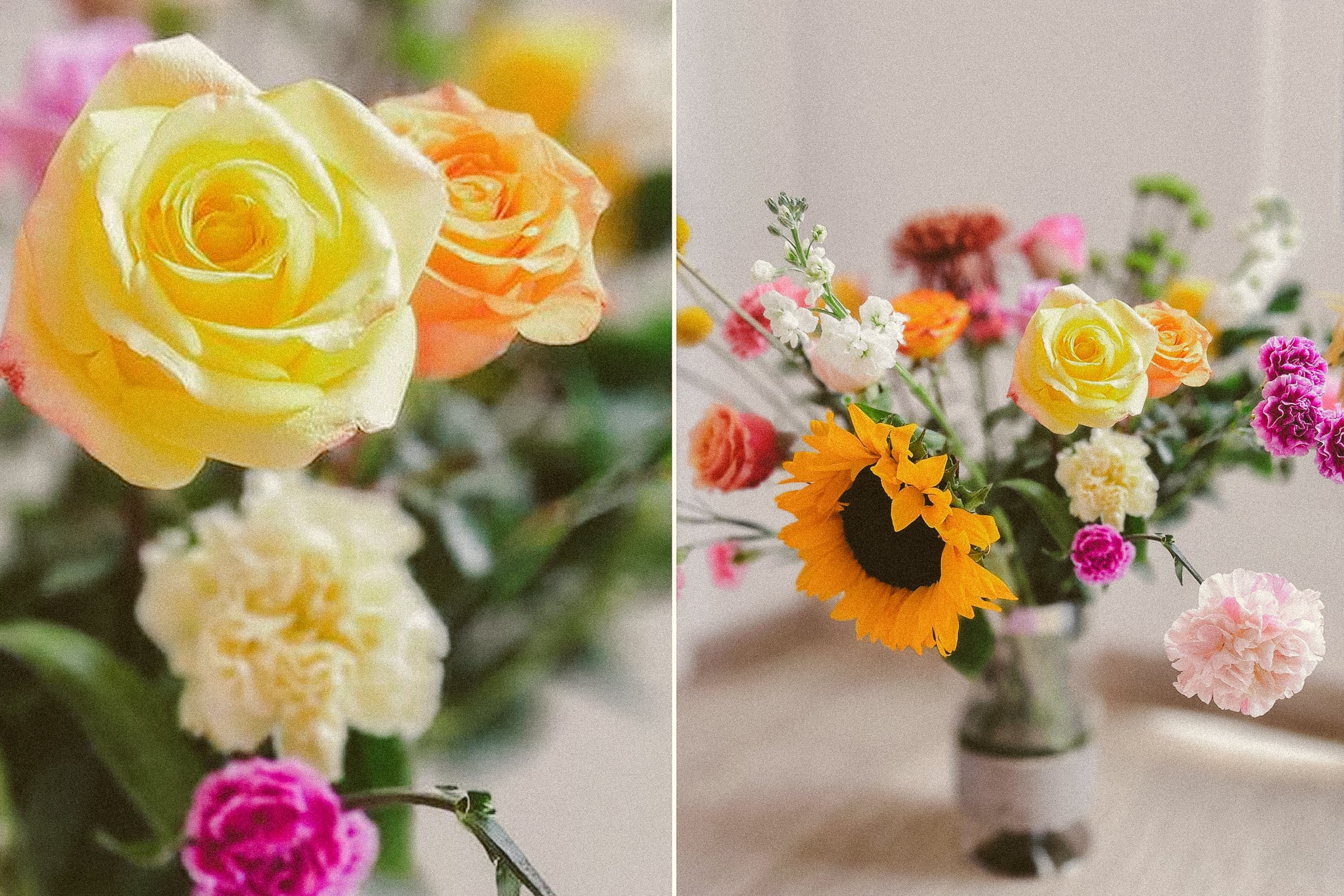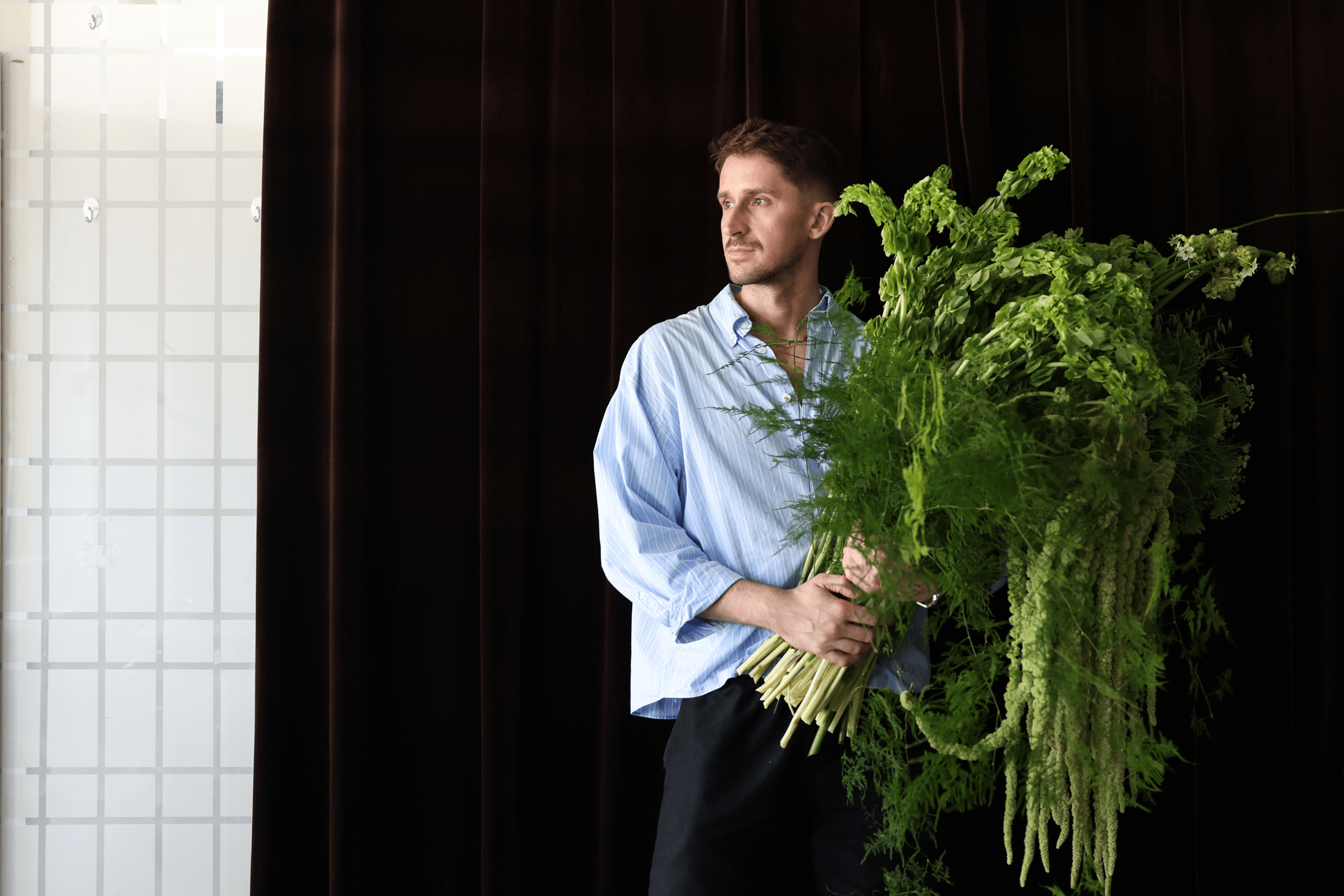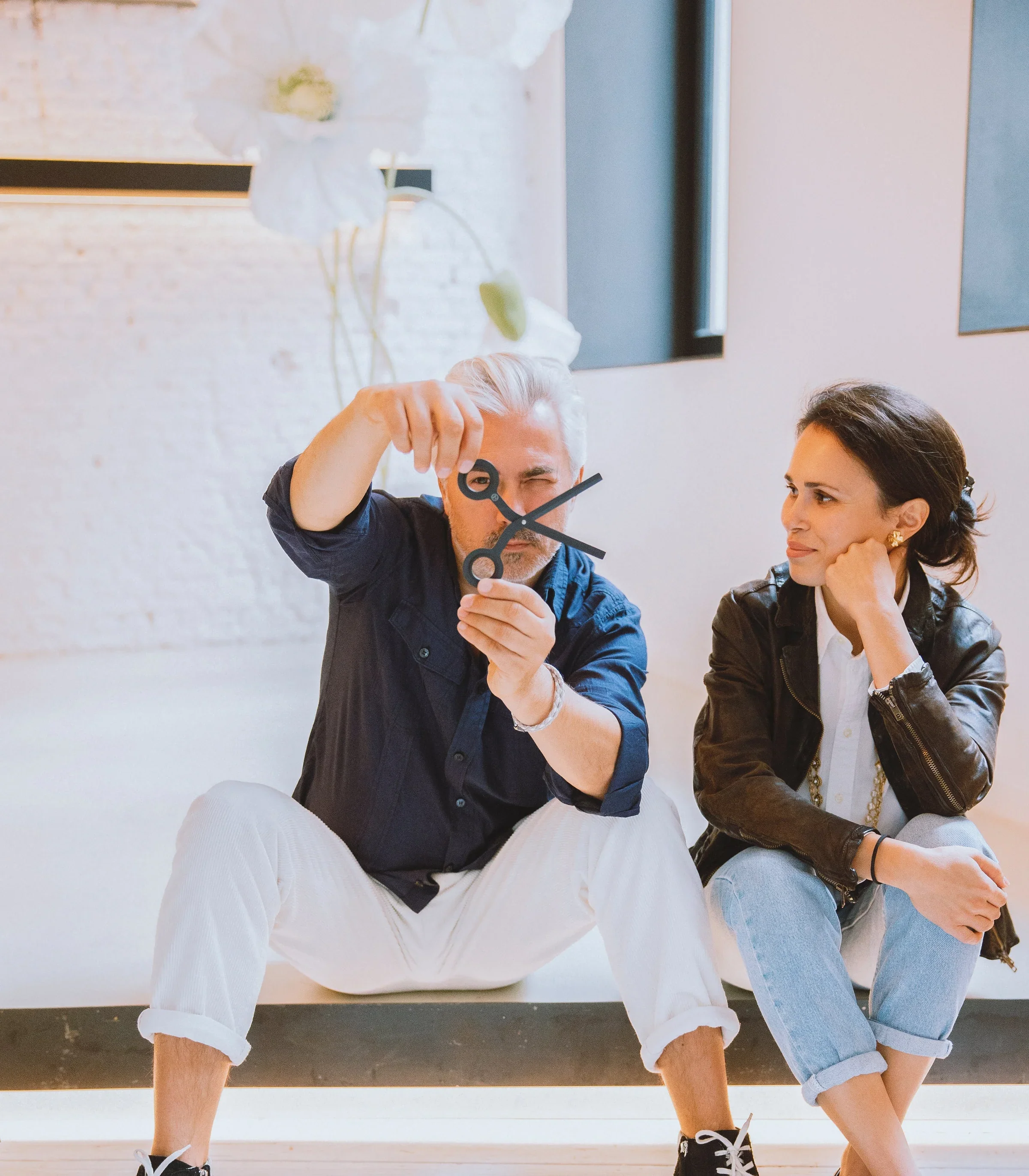Taras Horobets hails from Vovchansk, a city in Ukraine’s Kharkiv region. During his tenth year of school, he spent a year in Quito, the capital of Ecuador, which completely changed his worldview. He returned to Ukraine to finish school and university, but the idea of returning to Ecuador never left him.
In 2012, Horobets moved to Quito and began his career in the flower business. At first, he worked on plantations, focusing on quality control and sales. In 2018, he opened a company All Flower Farms and started delivering orders to the USA, Canada, Holland, Spain, Italy, Poland, Ukraine, Georgia and Kazakhstan.
YBBP journalist Mila Shevchuk spoke to Taras Horobets about the peculiarities of the flower business, mountain plantations in Latin America, and how he sends orders to Manhattan and Kyiv’s Ukraflora from Lake Titicaca and the jungle.
How and when did you first go to Ecuador? Was it a tourist trip, or were you already considering moving there?
I first came to Ecuador, as my mother says, “because of her university sins.” Her first husband was Ecuadorian — they met at Kharkiv Karazin University and moved to Ecuador, where their daughter was born. Then my mother returned to Ukraine, married to my father, and I was born. In 1993, after finishing school, my older sister went to Ecuador and started working in sales in flower plantations. I haven’t seen her for 12 years, and in 2006, my mother and I went to visit her for a year. It was my first spectacular trip abroad, to another continent: pineapples, pitahayas, passion fruit. Totally different people. Another language.
І went to college there as a visiting student. Before that, I did not study diligently, but my time abroad made me realize that this is needed. And even then I knew that in the future I wanted to work for myself. As after returning to Ukraine, I got a state-funded place in the Kharkiv University of Civil Engineering and Architecture, I thought of launching a construction company.
Did this education help you in your life and work in Ecuador?
Yes, it was necessary: it gave me calculations, engineering thinking. There was even a case when I won a contest with 17 other candidates — in the sales department of the flower plantation Qualisa, one of the most reputable in Ecuador. In two hours, I solved 300 questions on different subjects, including mathematics. The head of the plantation, Krishna Guayasamin — the granddaughter of a prominent Ecuadorian artist — personally called me to inform me that I was the only one to score 180 out of 200.
The university also helped me with communication skills: I was a course leader and learned to negotiate with people without just forcing my own opinion on others. As the saying goes, “tongue will get you to Kyiv”, but mine took me all the way to Quito, to Ecuador.
After returning from your first trip to Ecuador, you lived in Ukraine for five years, and in 2012 you moved to Quito for good. What drew you back?
My hometown is Vovchansk. One of my best memories from there is how my friend Artem Pivovarov and I went to the park, played the guitar, and belted out songs. We attended the same school in parallel classes. But I didn’t see a future for myself in Vovchansk. There were seven plants and factories there, and half of them were in ruins. I had a completely different feeling in Ecuador: I saw that anything is possible if you work for it.
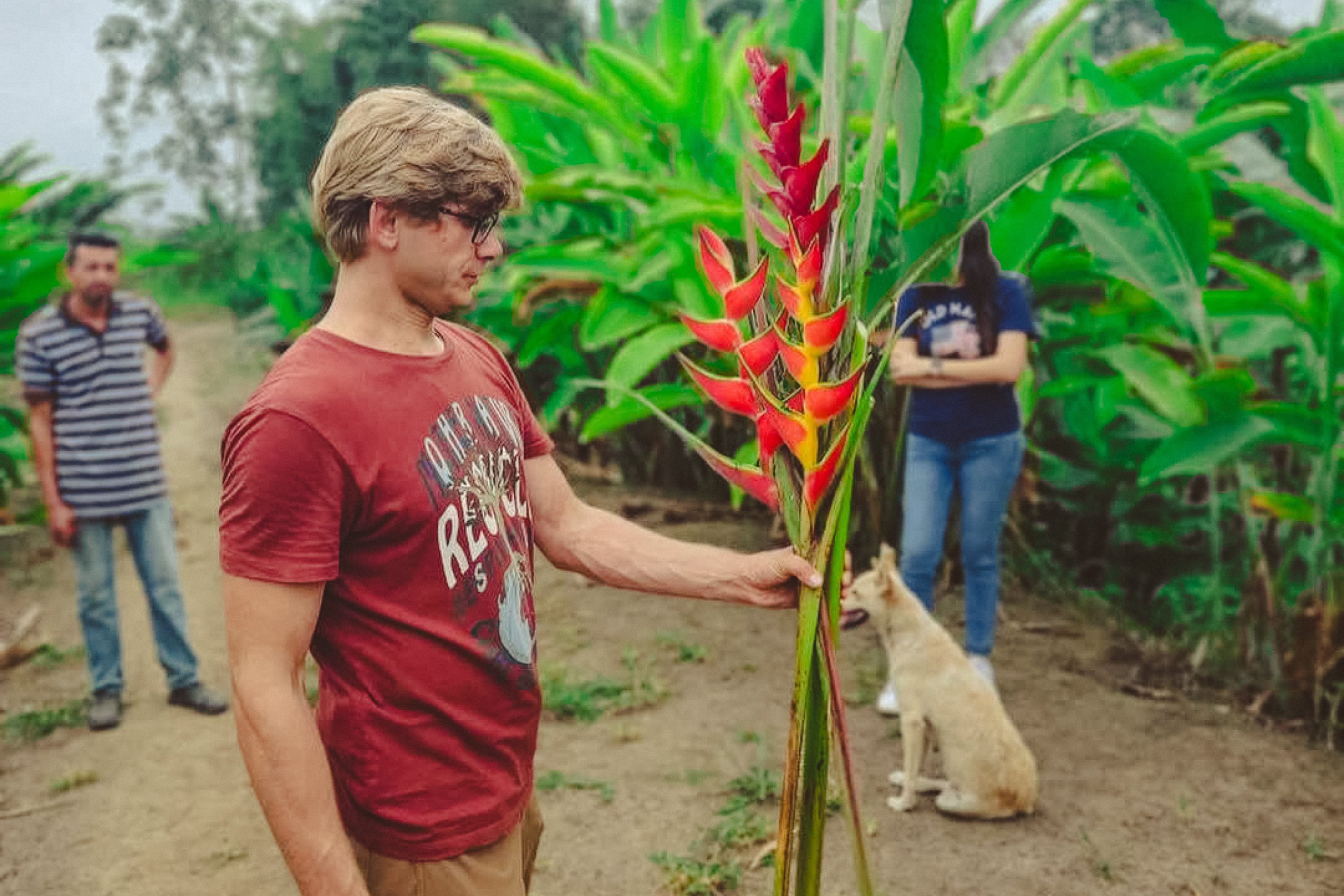
It’s difficult in any country without knowing the language. How did you study Spanish?
My relationships with girls helped. I dated a girl even during my first visit. Her name was Guadalupe Montserrat; she was my neighbor, and we used to come home from school together. And also books — I’ve read more books in Spanish than in Ukrainian. Although it is difficult, it’s important to read aloud. At first I sounded like a tractor that wouldn’t start — it was funny even to me. But later, my speech became much smoother, like a well-oiled machine.
I had a principle: learn ten Spanish words a day. You can even crash on the floor, but do it. There were times when I partied until five in the morning, but still woke up and studied Spanish. My first words were “pencil,” “ashtray,” “cucumber,” “glass,” and “conquer.” At the end of the day, I would take a notebook and write a dictation. If I made a mistake in a word, I would write that word on an entire page. This went on for six months without a single day off.
How did you get settled in Ecuador? Did your older sister help you find a job?
Nothing came on a silver platter. I came to another continent at the age of 21 and first lived with my mother, niece and sister. Thanks to my sister’s connections, I once went to an interview at the plantation. But when they immediately asked for fingerprints, I got scared and left, only to find out later that this was standard procedure. So my first job there was a post-Soviet-style restaurant with a payment of $20 for a five-day work week. Within a few business days, I rented my own apartment for $120 a month. I started with just a mattress and a few plates, and I even had to use a knife as a mirror to shave. My paycheck covered rent, and I survived on tips.
It was at that first unsuccessful interview that I met the company’s shareholders' nephew. He was from Ivano-Frankivsk region, we were the same age and quickly found a common language. Three months later, he called and invited me to a meeting in the park. He showed up with a bottle of Hennessy cognac, while I barely had enough money for a cola and a few plastic cups. We sat and talked about life, and then he offered me a job working directly for the shareholders in the plantation’s quality control department. We had to start at five in the morning the next day. But I overslept since I used to sleep until lunch because of my night shifts in a bar.
However, I did come a day later. I didn’t understand anything about flowers, so they told me to follow the agronomist with a notebook and write everything down. I was scolded for everything: for the lack of workers and even for the rain, because it was necessary to control the watering process. But in the first month I earned $800, and when I discovered a hole in the fence where flowers were being stolen, my salary was raised to $1,000, and I was put in charge of the bush roses. At the age of 22, I had a stable income for the first time and brought two friends from Vovchansk to work there with me.
What was the most difficult for you the first time in Ecuador?
Self-organization. It was a challenge to get myself to bed at nine in the evening and wake up at four in the morning. There is no one to say “do it”, everything depends on you. The work environment is also cold; there aren’t the same warm relationships as in Ukraine. It’s strictly business.
It was necessary to switch to the mentality of Ecuadorians, to remove excess heartiness: people in Latin America are more sensual and flirty than spiritual. There isn’t a strong culture of being accountable for one’s words. Their colonial history has taken deep root and still has an influence. Ecuadorians often can’t express their own opinion, and when they don’t like something, they’d rather stay silent. In Ecuador, others just adapt to you. In Colombia it’s different — I am currently working with plantations in Medellin and see the contrast.
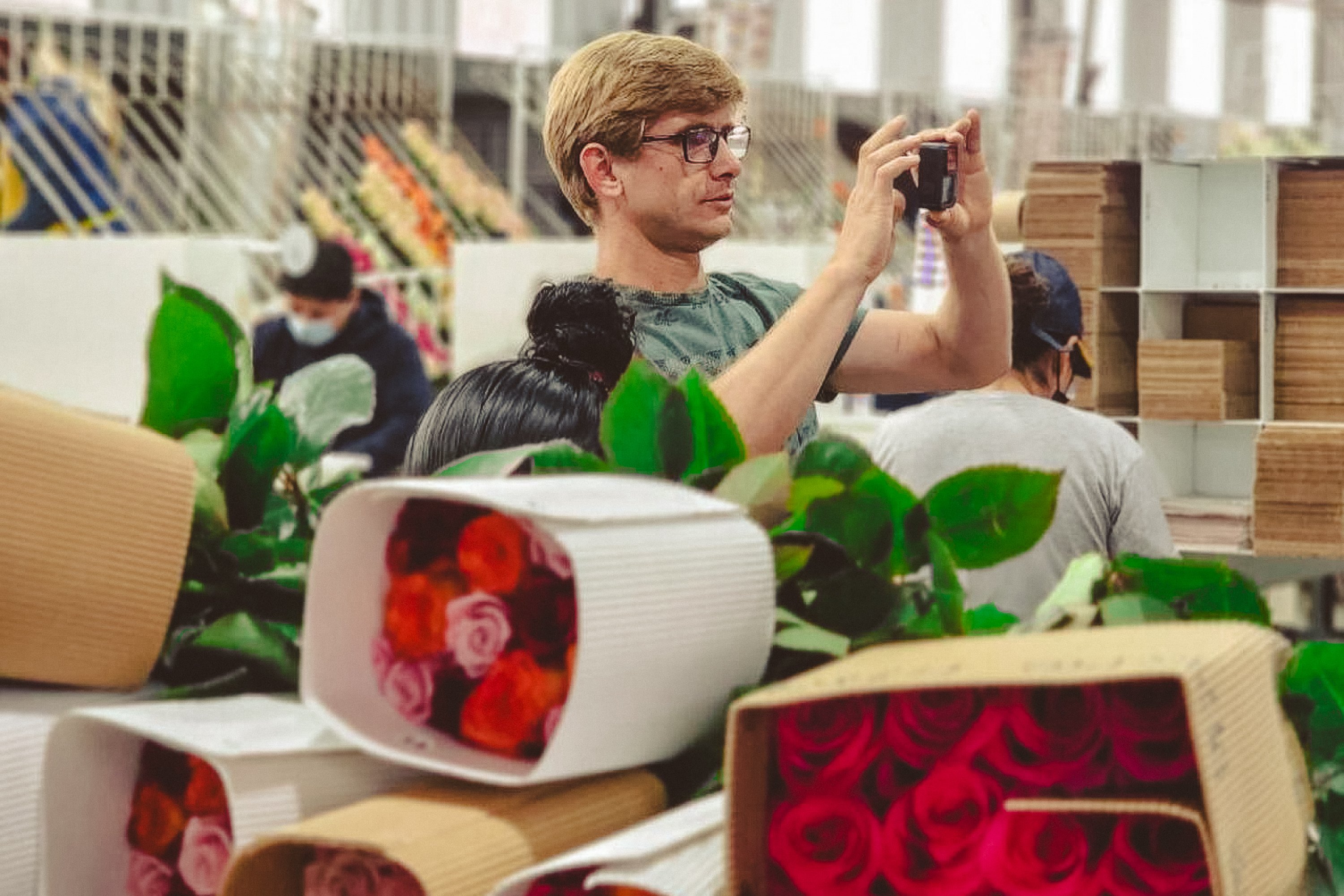
At the beginning, I wanted to learn everything about flowers, so in my spare time, I did menial work. I went to the warehouse, worked in the cold refrigerator, pricked my hands, but I learned how to properly package flowers. This helps me now: I check the packaging for my customers and teach the plantations how to pack better. I also learned to cut flowers — they gave me a pair of scissors, which I still have in Quito as a souvenir — and after a working day I cut roses with my headphones on. I became an example for the other workers: “Look at the flowerbeds this gringo has. And you’ve been in the flower [business] for 15 years and can’t do that.” Of course, I had just two flowerbeds, and the employee had 200.
Who primarily works on flower plantations in Ecuador — locals or foreigners?
Agronomists are often from EU countries and Colombia. This is a well-paid position. Most of the flowers are cut and cared for by locals or workers from Venezuela. IMany plantations prefer to hire spouses, as they are believed to be more reliable. There are people who have been cutting flowers for 30 years.
What’s a typical workday like on a plantation? Do workers get weekends and lunch breaks?
The schedule depends on the department. Head of quality control and sales managers work weekdays, starting at 7 a.m. for an eight-hour shift. But I worked every Saturday as well. On the plantation itself, it’s different. Some flowers must be cut before sunrise because they open up once the sun rises. They must be transported closed and then placed in water so that they open. Therefore, some plantations work from four in the morning. Saturdays are a half-day. During the holidays, there is round-the-clock work for two or three weeks: workers sleep on cardboard boxes and take turns. There is a lunch break — it’s sacred in Latin America. There’s also a half-hour break for football. Every plantation has a field where workers in rubber boots and uniforms chase after the ball. There are inter-plantation championships, women’s football is developed too.
What was the catalyst for your next step in the flower business?
An interview for the next job, with the general manager of the Qualisa plantation, Walter Berenzen. He is Dutch and one of the best agronomists in Ecuador. At my previous job, I spent three years on the plantation with a notebook. I learned formulas, all the agronomy supplements, flower varieties, how to care for them, and what diseases they get. All of this impressed the general manager, and in 2015 I started working in Qualisa’s sales department.
This plantation probably had the strongest team in Ecuador and the highest quality flowers. There I learned both sales and how to build international relations, which is the basis of what is needed for my own company. And it was comfortable to work there. Unlike other plantations where sales bonuses were individual and workers competed for them, Qualisa always supported the team and rewarded everyone with bonuses.
I always did more than what I was paid for. For example, I came up with an additional service for customers. I would take them on free tours of the plantation, and after they placed an order, I would personally inspect their flowers and send them a video. My advantage was that I know a lot about flowers — unlike most sellers. I could talk to them at length, and customers found it interesting.
How and when did you decide to open your own business?
It was two years since I started working for the cool Qualisa plantation. I was earning $2,000, but wanted twice that. I went to the manager and asked directly what it would take. We talked and agreed that the best path for me was to take a severance package and a strong endorsement from the plantation.
Qualisa recommended me to a huge Dutch client Green Deal to take them as a representative in Ecuador. They gave me $3,000 salary for working from home, and also entrusted me with developing a web store. Then I got to know the airlines, plus I had good relations with the plantations: while I’m drinking tea with the girls there, I’ll collect my orders and they’ll give me the best flowers.
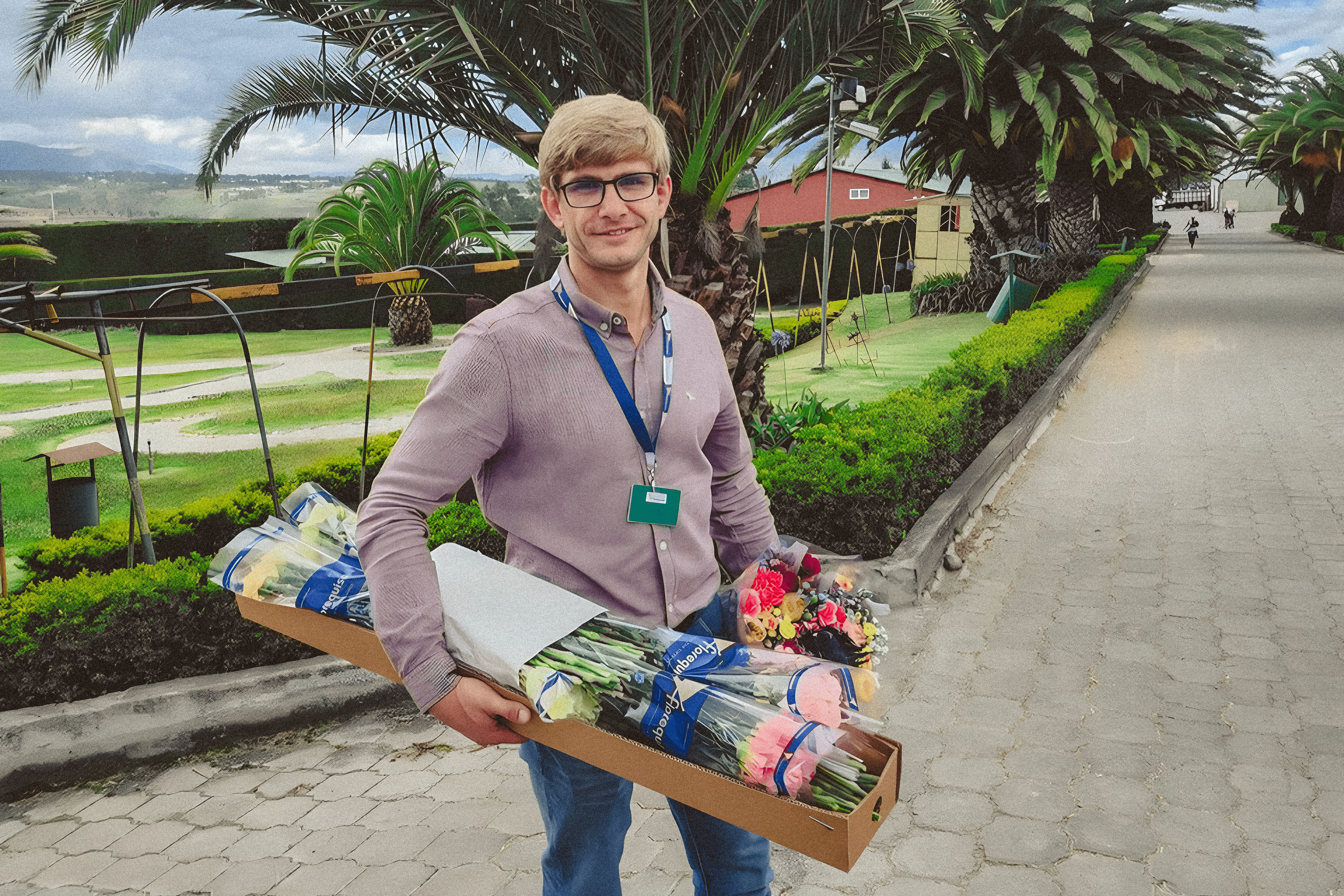
But I already wanted to earn $5000. Therefore, in 2018, I resigned and started working for myself: at first with two friends. But, as a wise woman — my mother — said: what is collective belongs to the devil. I did everything myself, even the balances and invoices, but the money was divided between three. So I left them and ran the business myself for a long time. At first I was recommended by a truck that delivered flowers to shops in Vinnytsia and Kyiv. They were my main customers. Then there were Odesa, Dnipro, Lviv and entering other countries.
What investments were needed at the start of the business? And how it works now: you pay your own money for the flowers or does the client pay everything right away?
I didn’t invest a single penny at the start. Procurement schemes vary: there are prepayment deals, and there are plantations that work with 15-20 or 30-45 days of credit. My partners trust me because I’ve been in this field for a long time, and I have regular customers, particularly from the USA, who are well-known throughout the flower industry.
Is your company registered in Ecuador? Are there many complications with paperwork and bureaucracy?
Yes, the company is registered in Ecuador. Few people want to register a business here, but I believe that if a country provides an opportunity to earn money, it has the right to its tax. Taxes here are low — 15% (it used to be 12%), so I’m not greedy. My business was named All Flower Farms from the beginning, but I first operated as a sole proprietor. One bank closed my account, so I had to open another one. The bank director then personally asked what I was shipping to the USA from Latin America that was causing me to constantly receive so much money. I showed her the business’s Instagram, called my clients, showed her invoices and air waybills for flowers. Ultimately, she said the business was 'interesting' and advised me to register a legal entity. But first, I increased my sales volume and got my Ecuadorian passport.
In 2018, I officially registered the company, hired accountants and people to collect orders. I had both local people and six Ukrainians who were engaged in collecting orders and online audience targeting. There are also Ukrainian regular customers, the largest of which is “Ukraflora” in Kyiv. Every year on March 8, I send them 1,000 roses for free, which they give to their team and to women on the street.
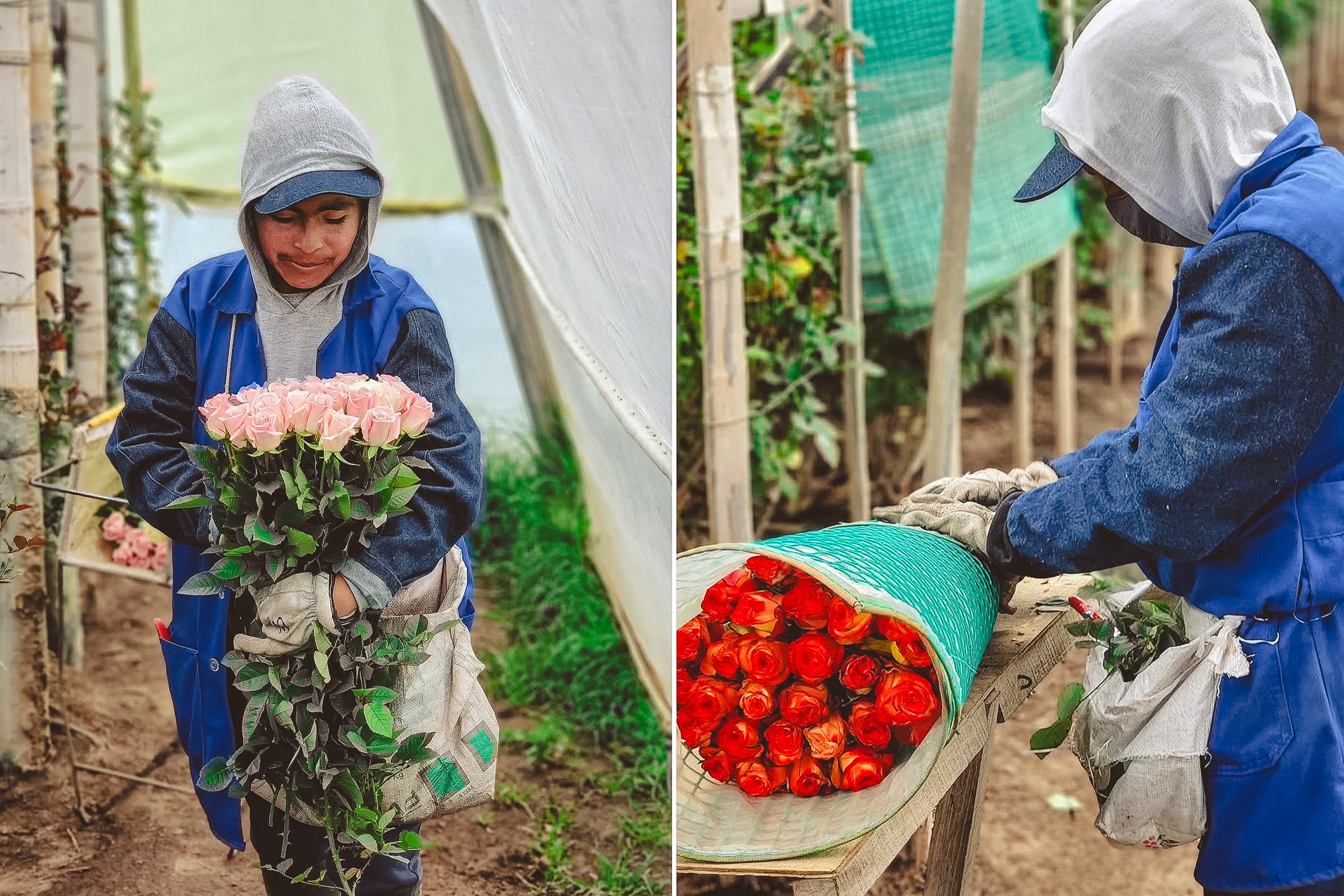
Are there countries where advertising just doesn’t work, or where a special approach is needed?
In Poland, advertising still isn’t working well; there has been no increase in shipments. I have two regular customers there, I send them 500 kg each week, i.e. 10,000 stems. I’m looking for a manager in Poland whom I can trust. Because to give contacts of new customers, to a new market, is to give everything.
What is the minimum number of flowers to place an order?
Right now, the minimum is 100 packages, with 25 flowers in each, which can be of the same or different varieties. But my dream is for a person, no matter where they are, to be able to order at least 25 roses from Ecuador. So they know that these 25 roses will be exclusively cut and chosen for them, and the flowers will come straight from the Andes. But this is a matter of price: the flowers themselves may cost a maximum of $50, but the delivery of a bouquet will be at least $100. The challenge for me is to figure out how to make it happen. But I like to work with something that no one else does.
Most often you sell roses. What varieties are popular now?
This depends on the market. If the post-Soviet countries prefer roses with a stem of 80 cm, the USA used to order short ones — 40-50 cm. I convinced them to buy long-stemmed flowers by sending 80-centimeter roses to the States at the price of short ones. Eventually, the American market shifted to the “eighties”. Some countries ask for tinted roses: they are either treated with a spray, or the stem is cut into parts and placed in different colored solutions — and the flower changes color within a day.
Currently, the most popular are garden and bush roses with several buds on a branch. Popular varieties include Ohara, White Pine, as well as the Expression line (Pink, Melon, Control). They go especially well in Canada: a Montreal-Toronto shipment is already being prepared. The Canadian market turned out to be one of the simplest to work with: the customer picks up the flowers at the airport and pays the tax there. In other countries, customs are more complicated. My most difficult experience was in Georgia. If the invoice states 3,000 stems but workers accidentally add 25 more, the fine can amount to several thousand dollars.
Do the flowers that Ecuador exports also go to the domestic market? Or can they not be bought within the country?
They can. I have a lot of videos showing the process of how flowers are selected. They are cut in the greenhouse, taken to their first hydration with chemicals, put in nets. Then they are manually sorted to determine which are suitable for export and which are not. Export flowers are sorted by stem length (50, 60, 80 cm) and bud size. Category B flowers go to the domestic market; they may have crooked stems, smaller buds, or a few torn petals. Flowers with one or two damaged petals can still be exported. But if there are three, they are sold only on the domestic market. Ecuadorian roses are like Ecuadorian bananas: if you buy them in Ecuador, they will not be as tasty as Ecuadorian bananas in Ukraine.
I noticed that you’ve compared Ecuadorian flowers to iPhones and diamonds, saying they’re also a well-known brand.
Right. Ecuadorian roses are the best; they’re the iPhone or Hennessy of the flower world. You won’t find buds like this anywhere else because the form of the bud here is exceptionally tall and elongated. Various factors affect this. There is a lot of sun in Ecuador, which is necessary for everything to grow and flourish. But the sun is not enough. Plant roses under such a sun on the coast, where the temperature is 30° to 40°C, and they will not have time to grow long and start to bloom early. But there are mountains in Ecuador. When rising for every 100 m, the temperature drops by 2°. There are plantations at an altitude of 2,800 m. The temperature there is from 4° to 8°C, and there is plenty of sun. The rose grows, but because of the cold it doesn’t bloom, and a 1.3-meter stem with a huge bud develops.
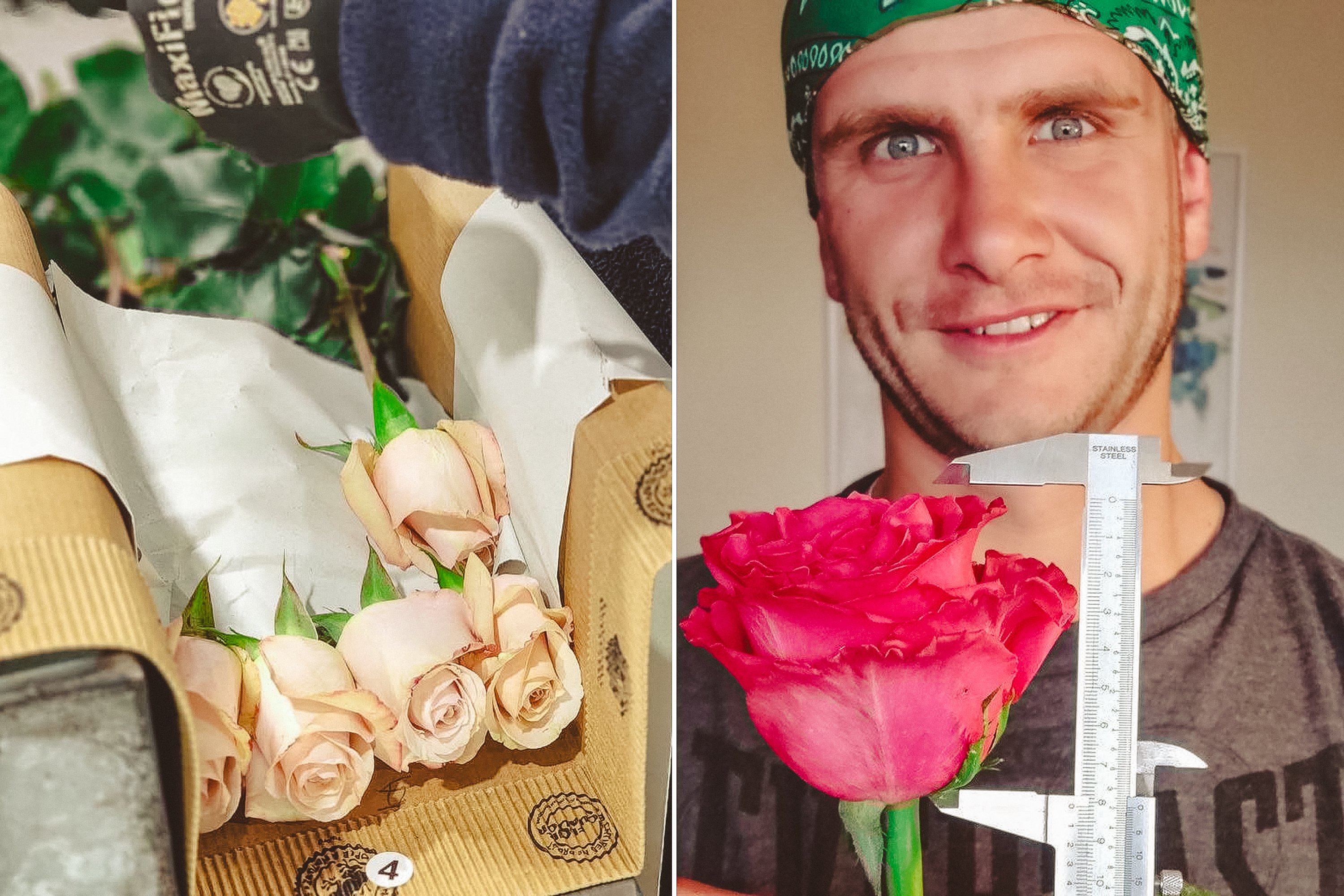
Did All Flower Farms have problems with payments, customer debts?
When the pandemic started, I was cheated for the first time, and it cost me $16,000. It was a real shock for me. One client stopped picking up the phone, another called in a panic, and the next day she was taken by an ambulance. Both were from Vinnytsia, they ordered flowers, but because of the lockdown, everything went bad in the cold storage. It was very painful for me, like a first love. For days, I didn’t leave my room and kept asking myself why this happened when I work so honestly. Then I realized: everyone does business in their own way.
What is the situation with competitors? Is it an aggressive market? What are your preferences?
There is a lot of competition, but my main advantage is experience. I was a hired worker for long enough to learn all the nuances. When I post videos with clients, people ask me, “Aren’t you afraid someone will steal your clients?” But I’m confident that clients stay because they feel comfortable working with me. I also always share information with flower brokers, which surprises many. People ask: what if there aren’t enough flowers or customers? But flowers aren’t a product that lasts for years; they last for a week or two at most. They’re like bread; people buy them all the time.
Do you have personal principles of working with clients or any taboos?
Everything is transparent with me: I show the entire process in videos on Instagram — from growing the flowers to cutting and packing them. Some videos get over three million views. I want my customers to get the best product, and people appreciate that. When I see positive reviews in the morning, it warms my heart. Once, a client called me and said: “Taras, our city is happy with your flowers.” I will never forget it. This is what I work for, and money for me is a side effect of a well-designed job.
I’m proud that I can send the best flowers in the world to the USA, Canada, Ukraine, Spain, Italy, Kazakhstan, Georgia, Poland, the Netherlands. I send not just a product, but a great mood, sex and warm memories.

But there is also a taboo: from 2022 I no longer work with Russia. I used to sell there — and I paid a high price for it. In addition to Russian tanks entering my hometown of Vovchansk and destroying the city, I lost over $200,000 that Russian clients never paid me after February 24th. I had shipments scheduled for that day: 100 tons of flowers were sent out for the March 8 celebrations. As a result, almost all the money was burned, and only one client paid $6,000 out of $66,000 they owed me.
I lived on these funds for the next six months as I rebuilt my business. I spent most of that time living in the jungle, which was both cheaper and a good place to clear my head. My main clients that year were in Ukraine and Russia. Naturally, after February 24th, I didn’t expect to receive payments from my Ukrainian clients. However, I still owed money to all the farms, and they were demanding payment from me. This made it impossible to work with them for clients in other markets; they refused to provide flowers until my debts were settled. Eventually, a few farms decided the war was a force majeure situation and later accepted a 50% payment, forgiving the rest. I later paid off the full amount to the others. When I started working in the US market, I called each farm to individually negotiate a debt restructuring plan, outlining how I would pay them back in installments.
How and when did you enter the US market? What did you do for that?
While in the jungle, I started recording promotional videos for All Flower Farms: a friend convinced me that paid advertising and online targeting were necessary. Before, finding two new clients was a success. But after launching the ad campaign, I received dozens and hundreds of leads.
The main focus was on the USA — Chicago, New York, Seattle, Florida, Miami, Los Angeles. I recorded hundreds of takes in English. Also made cold calls in broken English, but no one laughed. It turned out to be the most difficult to enter New York and Chicago: I spent four months figuring out the best way to deliver flowers there.
The first order to New York was stressful: I bought flowers for $4,000, and the client disappeared at the last minute. I could have canceled the order, but I was determined to deliver flowers to New York. So I took a chance and just started calling flower shops there, offering them fresh flowers at my prices. It was extreme, also the varieties of flowers were unpopular and the packages were too big, they don’t take such in the USA. But before the shipment arrived, I not only sold all the flowers, but also acquired new customers. The client later apologized and wanted to compensate for the damages, but I decided not to work with her again.
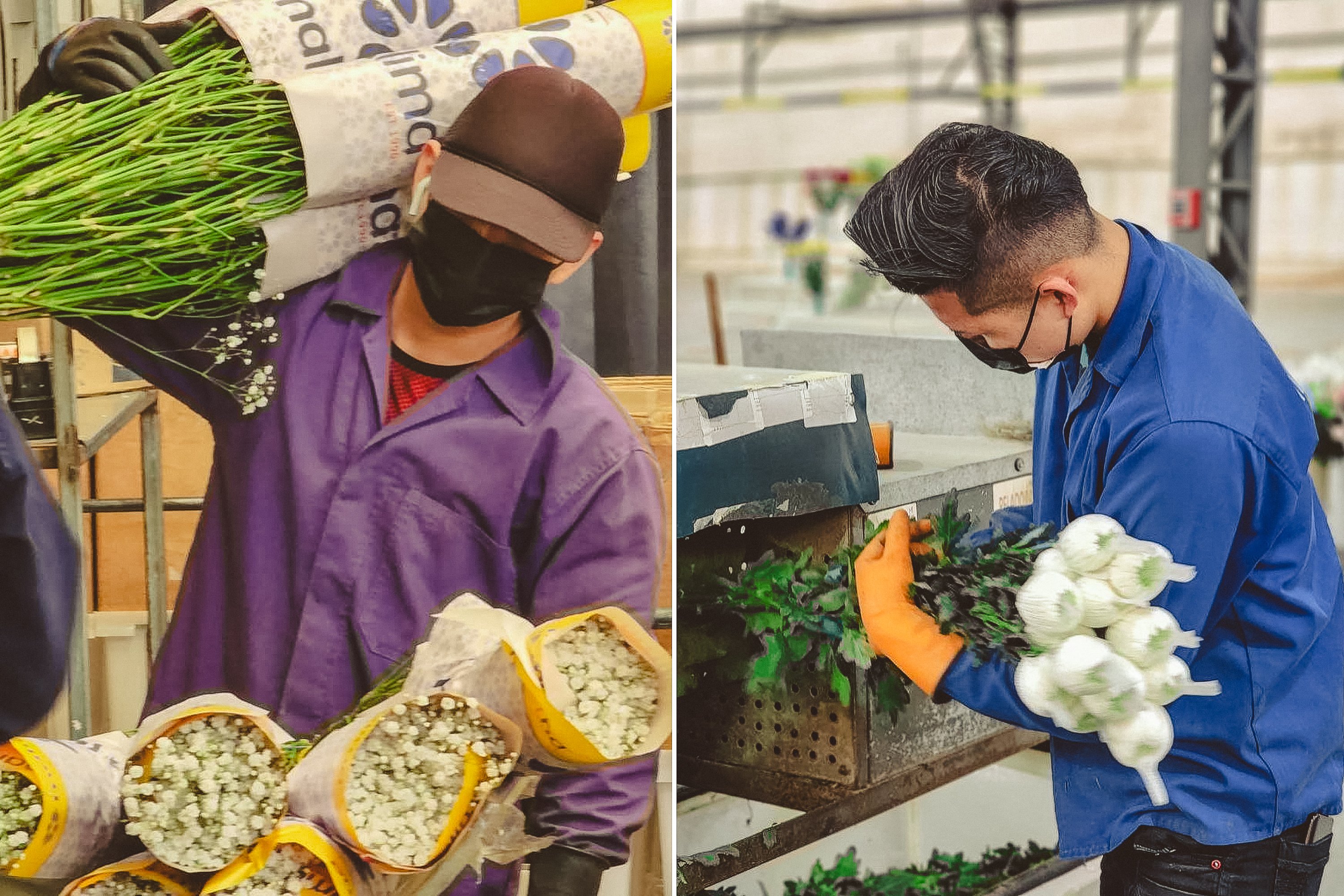
After that, the fear was gone. I started sending flowers to the USA every week, but only tested varieties. That’s how a base of a dozen flower boutiques was formed. Thanks to advertising, new customers came: they asked for delivery to 5th Avenue or 26th. The logistics were difficult: the flowers were either in Ecuador or Miami, and you had to find reliable people to transport them. But I always met incredible people, and for that, I am grateful to heaven.
Are the markets you work with bargain or not?
They bargain everywhere, but in different ways. And I bargain with the plantations, too. If you work with large wholesalers, even a two-cent price difference adds up to thousands of dollars a week. The customer often doesn’t care about a 10-cent difference. He only needs 500 roses for a single boutique, but those 500 roses from Ecuador must be the very best. In the USA, I work with good florists, they are known around the country. I have some favorite clients, very demanding ones. They are hard to work with, but I love it, and they appreciate me. I generally like this business. There’s a lot of negativity, but I’m used to it and no longer react to it.
Do you have a fixed percentage of flower sales or a per order rate?
There are sellers who always have fixed prices. Everything is transparent with me, so my flowers are always sold under the best conditions. Sometimes the plantations owe me, so I get a good discount and pass it on to my customers, too. With large wholesale customers, earnings are generated by a markup of a few cents per stem. It all depends on the volumes. There are orders where there may be a large margin, but such cases are very rare: mostly, it’s for individual bouquets that have expensive delivery.
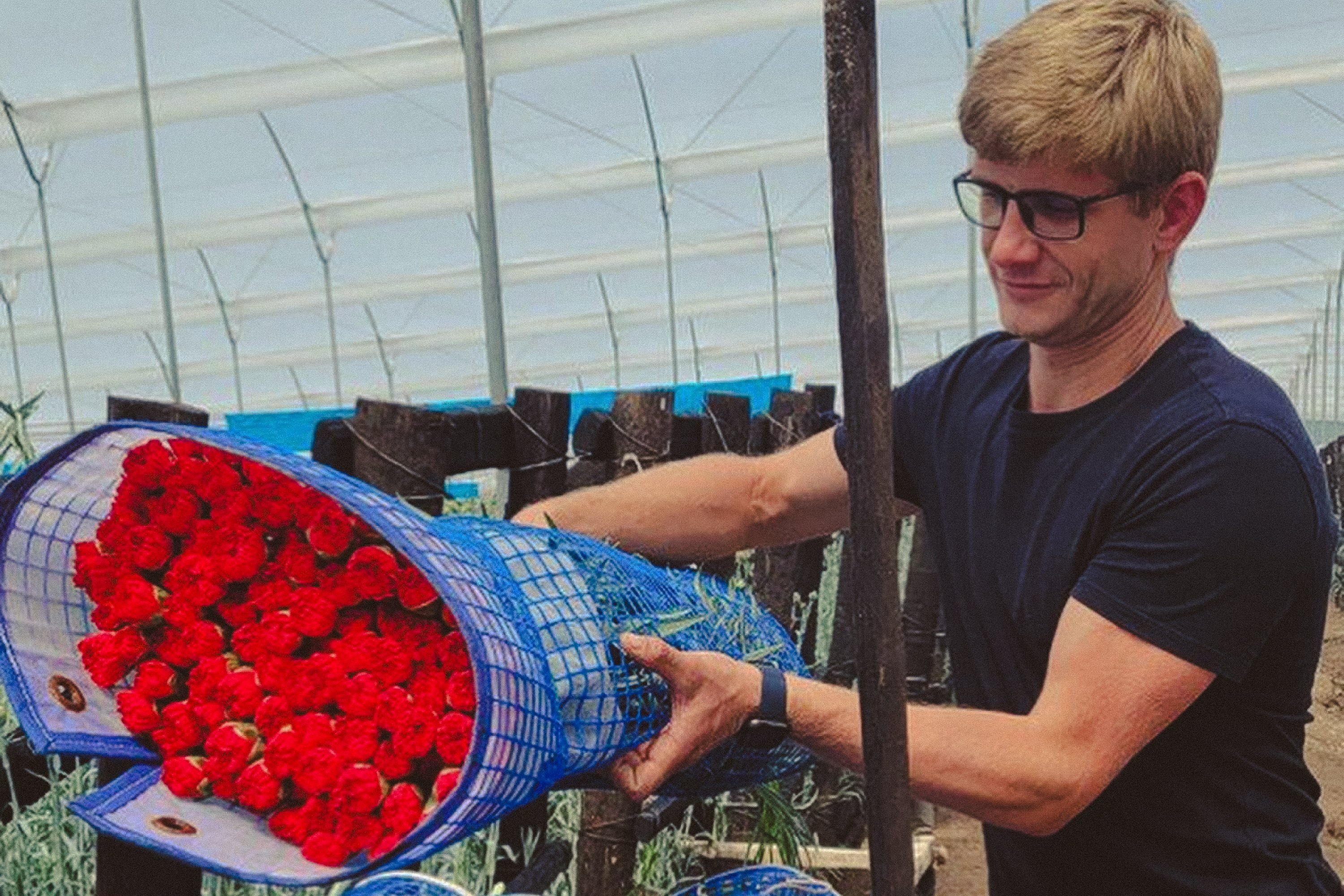
Although South America is far from Russia, it is no secret that the Russian Federation significantly influences local political processes, sponsors coups and promotes its own narratives. Can you feel this influence now? How do Ecuadorians view Ukraine and Russia’s war against Ukraine?
Recently, the economic and political ties between Ecuador and Ukraine have improved. In May of this year, Zelenskyy and Ecuadorian President Daniel Noboa agreed to sign a free trade agreement and open a Ukrainian consulate in Ecuador. Because now people fly to Peru for documents, it is very expensive and takes a long time. There was indeed a lot of Russian influence here, but lately, the true news about the events in Ukraine has finally emerged, and people have become more supportive.
South America has always had a high level of crime according to world indices. Have you had any dangerous situations at work?
I received many threats, especially when the plantation assigned me to work with problem customers who owed money or had received spoiled flowers after paying $30,000 in advance. They would call me from Ecuadorian numbers and say, “We know where you live; we’ll cut your head off.” I never hid; I even sent them my geolocation once. No one came, and the next day they apologized.
These stories are not even about South America, but about the fact that after the 1990s many people entered the flower business from “that environment” — who in the 1990s were, shall we say, in different businesses. Back then, the margin in flowers was so high that in one week of sales on March 8, you could buy an apartment for $150,000 in downtown Quito. Here people still talk about suitcases with a million or two dollars in the 2000s.
When you started working with flowers, you were 22 years old. How did you imagine success in Ecuador then, and how has that idea changed now?
Back then, I considered it a success to drive around the plantations, call customers and have an office for orders. Now I have a real Work&Travel mode: I constantly work with three phones, but at the same time I travel through Latin America — Peru, Colombia, the ocean coast, Lake Titicaca, the jungle. in my work, I don’t think about profit—my goal is for clients to be happy with my best flowers. And when you really want to do something good for the world, everything you need comes.
